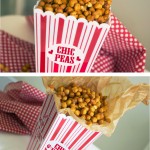Snack attacks — they can sabotage the best-laid healthy eating plans! It’s true that eating small meals throughout the day can keep your metabolism steady and your hunger at bay. But the type of food you are munching matters — a lot.
 A study published in July in PLoS Medicine, an online journal, showed that the number of calories Americans consume has increased dramatically over the last 30 years or so. In a study done in 1977, we ate an average of 1800 calories a day. By 2006, that number had jumped to more than 2300. Part of that rising number has to do with soft drinks and super-sized portions. Another big culprit, though, is the snack attack. According to the study, folks ate an average of 3.8 meals and snacks a day in 1977. In 2006 that number had climbed to 4.8. That extra meal is taking a toll on our health!
A study published in July in PLoS Medicine, an online journal, showed that the number of calories Americans consume has increased dramatically over the last 30 years or so. In a study done in 1977, we ate an average of 1800 calories a day. By 2006, that number had jumped to more than 2300. Part of that rising number has to do with soft drinks and super-sized portions. Another big culprit, though, is the snack attack. According to the study, folks ate an average of 3.8 meals and snacks a day in 1977. In 2006 that number had climbed to 4.8. That extra meal is taking a toll on our health!
So should you cut out snacking? Not necessarily. It all depends on what you are eating. Instead of buying those high glycemic, salty and sugary treats out of the vending machine, plan ahead and take your snacks with you.
Small meals with protein are low glycemic and won’t cause the big sugar rush and subsequent fall. Pack along some celery filled with peanut butter or cream cheese. Try some almonds and an apple, or even a boiled egg. Roasted and seasoned garbanzo beans (chickpeas) are a great low glycemic snack, too. Click here for a recipe for Crunchy Garbanzo Snacks.
All of these are portable, easy to eat, and a boost for your journey to a healthier lifestyle. Even if you are staying at home, it’s a good idea to prepare your snacks ahead of time. I like to get mine ready in the morning when my will power is at its peak. That way at 2 o’clock when I’m at low ebb physically, I don’t have to make decisions — because I tend to make bad ones at that time. Plan ahead and be aware of the dangers. You can avoid being ambushed by the snack attacks!
Eating to live and living for Christ,
Susan Jordan Brown
Source: Duffey KJ, Popkin BM (2011) Energy Density, Portion Size, and Eating Occasions: Contributions to Increased Energy Intake in the United States, 1977–2006. PLoS Med 8(6): e1001050. doi:10.1371/journal.pmed.1001050

